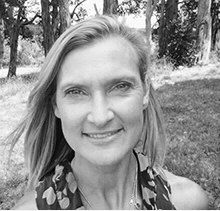-
We all have habits we wish we could change. Whether it’s snacking on chocolate biscuits after dinner, forgetting to floss our teeth, or hitting snooze when the alarm goes off, we know if we could just break that habit we would see a small but real benefit to our lives.
Often we can feel that we’re stuck with our habits. But as it turns out, habits are much less complicated and more changeable than we think.
In his book The Power of Habit, Pulitzer Prize–winning journalist Charles Duhigg breaks down the process of habits into three steps, based on his extensive research into behavioural science:
- The cue. This is the trigger that starts the behaviour. It might be a place, a time of day, how we feel or a type of interaction (such as an argument).
- The routine. This what we do in response – reaching for a biscuit, pouring a glass of wine, getting takeaway, settling into the couch with a TV remote.
- The reward. When the behaviour makes us feel good, we continue it, over and over again. For example, when the 3pm slump hits (the cue), snacking on something sweet (the routine) really does give you a pick-me-up (the reward), even if it is short lived.
So habits are simply learned behaviours that we continue because we like how they make us feel. If you consider that we form habits by repetition, just like learning to drive a car, it makes sense that we can’t unlearn them. Reaching for a biscuit with your cuppa is no more unlearnable than forgetting how to steer, indicate and check your mirrors.
However, we can change our habits – creating a new routine that responds to the same trigger.
"Habits aren’t learned in a day. It takes a conscious effort to create the new routine and consistently repeat it."
How to change a habit
Take a minute to list all the habits you want to change – what they are, when they happen, and why you do them. Then using these three simple steps you can create more positive habits to take their place.
To see how it works, let’s workshop the ‘3pm sweet snack’ example.
1. Identify your cues
What cue triggers the habit? In the case of snacking on chocolate in the afternoon, the cue might be the time (around 3pm) or how you feel (the energy slump).
2. Create a new routine
It’s 3pm and you’re tired. This time though, decide on a new behaviour you want this cue to trigger – what can you do instead of reaching for a sweet snack? You could drink a glass of water, go for a 10 minute walk outside, have some fruit, or do a quick Live Better at Home class. Think of something that will distract you or satisfy the urge in a more positive way.
Put prompts around the place to remind you – have your walking shoes under your desk, set an alert in your phone, or stick a motivating quote on your computer screen. Once you’ve created the routine you need to consistently repeat it.
3. Enjoy the reward
Take some time to reflect. How do you feel after the routine? You may notice your energy has perked right up after that walk, or the craving for a sweet treat has disappeared after that large glass of water (as has the urge to nap – dehydration can also make you drowsy). Remember how the new routine makes you feel and you won’t need willpower to keep going, just focus on the reward.
Habits aren’t learned in a day. It takes a conscious effort to create the new routine and consistently repeat it. But after a while, it will become automatic, and you can reap the reward of feeling great.
How to make (or break) a habit in 3 simple steps

-
Mental fitness explained
Just as you work to strengthen your body, your mental health deserves attention and exercise too.
-
Signs it's time to visit the dentist
Nobody wants to go. But there are good reasons to – promise.
-
The link between stress, anxiety and jaw pain
Physiotherapist Michael Chan explains how stress and anxiety can cause jaw pain, and how to help get some relief.
-
When you can't sleep next to your partner
You love everything about them – except their sleep habits.
-
The 7 best sleep apps
7 apps for deep restorative sleep
-
5 ways to relieve stress
Discover 5 easy stress-relief techniques to calm your mind and body. Try exercise, breathing, outdoor time, positive self-talk, and more for a balanced life.
Subscribe to receive the best from Live Better every week. Healthy recipes, exercise tips and activities, offers and promotions – everything to help you eat, move and feel better.
By clicking sign up I understand and agree to Medibank's privacy policy



.jpg)


